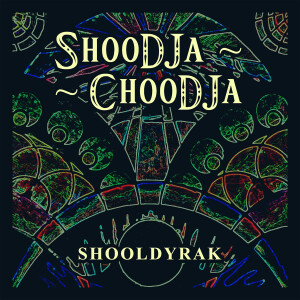 This amazing, mesmerizing debut recording called Shooldyrak by the techno-folk duo ShooDJa-ChooDJa is a wonderful example of the way music can open up the world for you. ShooDJa-ChooDJa are from Udmurtia, a forested Russian republic in the Volga district, the European part of Russia west of the Ural Mountains, between the rivers Kama and Vyatka. Through their blend of ancient folk songs and chants paired with electronic music and percussion, singer Nataliya Dzyga and “electronic tinkerer” and DJ Pavel Perevozchikov reflect the dualities and unities of the region and its Udmurt and Bessermen people.
This amazing, mesmerizing debut recording called Shooldyrak by the techno-folk duo ShooDJa-ChooDJa is a wonderful example of the way music can open up the world for you. ShooDJa-ChooDJa are from Udmurtia, a forested Russian republic in the Volga district, the European part of Russia west of the Ural Mountains, between the rivers Kama and Vyatka. Through their blend of ancient folk songs and chants paired with electronic music and percussion, singer Nataliya Dzyga and “electronic tinkerer” and DJ Pavel Perevozchikov reflect the dualities and unities of the region and its Udmurt and Bessermen people.
A good example (but a counterintuitive place to start) is with the title track, “Shooldyrak,” which is also the final track of this nine-song collection. It consists of Nataliya’s multi-tracked singing of twining melody lines that reflect the nature of the project, plus additional vocal droning and chanting from her, over a lush bed of calming synthesizer drones and arpeggios. The title is derived from the same word that form’s the group’s name – and that name reflects, as best I can tease it out from the translated liner notes and other online sources, different pronunciations of family names or maternal genetic lines from the Udmurtia’s northern (Pavel) and southern (Nataliya) regions.
Until more or less forcibly converted to Christianity by one or more of the Russian tsars, the Udmurts and Bessermen were pagans, their culture deeply tied to and reflective of the world around them – both the physical and spiritual aspects of the world. Since the fall of the Soviet Union in the late 20th century, they’ve been working to revive and protect their ancient culture. Dzyga and Perevozchikov work with ancient Udmurt and Bessermen melodies, pagan prayers and ritual songs of the Udmurt people as well as formal chants from weddings, fertility ceremonies and liturgical festivals and basically combine everything with various flavors of electronic music.
There’s just a lot to unpack here. Many of the tunes’ names include the word “krez,” which among other things refers to a type of emotional singing that is largely improvised based on the singer’s feelings in the moment. Other ancient tune types include gur, golos and nimtek. One of my favorites here is the krez song “Arafa.” The vocal part is a chant for the first day of spring that to me sounds somewhat like the chants of American Indians and some northern indigenous people. Those chants are laid over a sunny, simple melody on synth keys and what sounds like a human voice sample drone, with some hip hop type rhythms.
The opening track “Kudira” was well chosen. It’s a beautiful, deeply spiritual chant that includes the improvised chanting of some elder women from the village of Yunda. “Suan Zeldym Gur” sets a chant that honors deceased relatives to an incongruously bouncy dance track, and the besermyan funeral song “Bubyli” has a similarly upbeat pop tune. That apparent dichotomy is explained by the translation of the title, which is Udmurtian for butterfly, after an ancient belief that the soul of departed persons live on in these ephemeral insects.
“Soldier kelyan” is a krez used in a ceremony when young men went off to serve in the army. It has percussion that blends hip hop snares with a soldier’s march and a tune that Nataliya sings with an inflection that to me seems studiedly neutral, the kind of feeling you get that’s a mix of pride and dread and you’re trying not to show too much of either. A brief, dark instrumental interlude emphasizes the dread. “Gud Gur” is a solo a capella vocal by Nataliya in a pentatonic mode that sounds very east Asian at times. The vocals are chanted and sung, and include some throat singing, and some impressive octave leaps in up and down the scale. And “Gyrlyos” blends an Udmurtian funeral chant and a 17th century French ballad, “Dans le prison de Nantes,” about a prisoner who is in love with the jailer’s daughter. This one has the vocals buried under the droning synth sounds so that she is heard as though from a distance; the title means “bells,” and funeral bells peal as her vocals fade away at track’s end.
Nataliya Dzyga is a startlingly impressive vocalist as she chants and sings in many different styles and modes on these compositions. I’m not really equipped to judge Pavel Perevozchikov’s skills as a DJ and producer, but I have no criticism of the way he has used his medium to help bring these rooted, ancient songs and chants into the present. Good package design and liner notes are a big plus. ShooDJa-ChooDJa is a wonderful music project, and no doubt will be very exciting to see in live performance when such things once again take place.
(CPL-Music, 2021)
